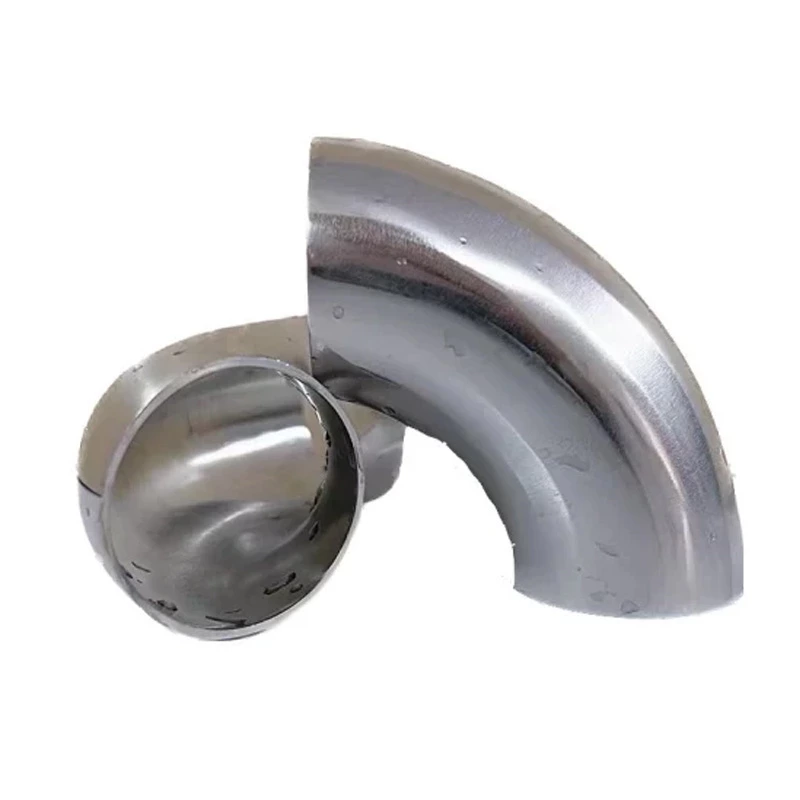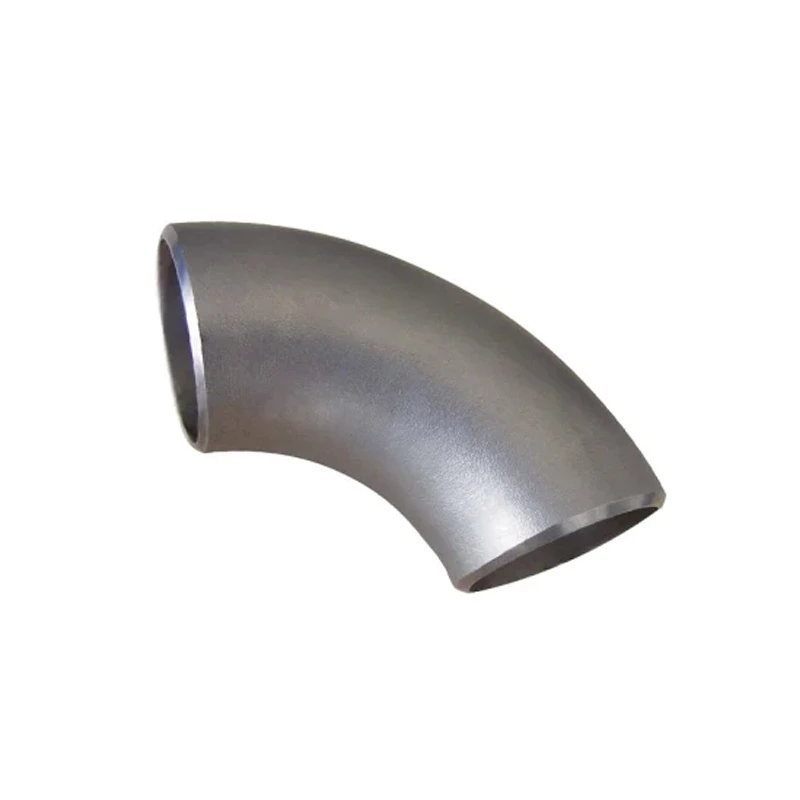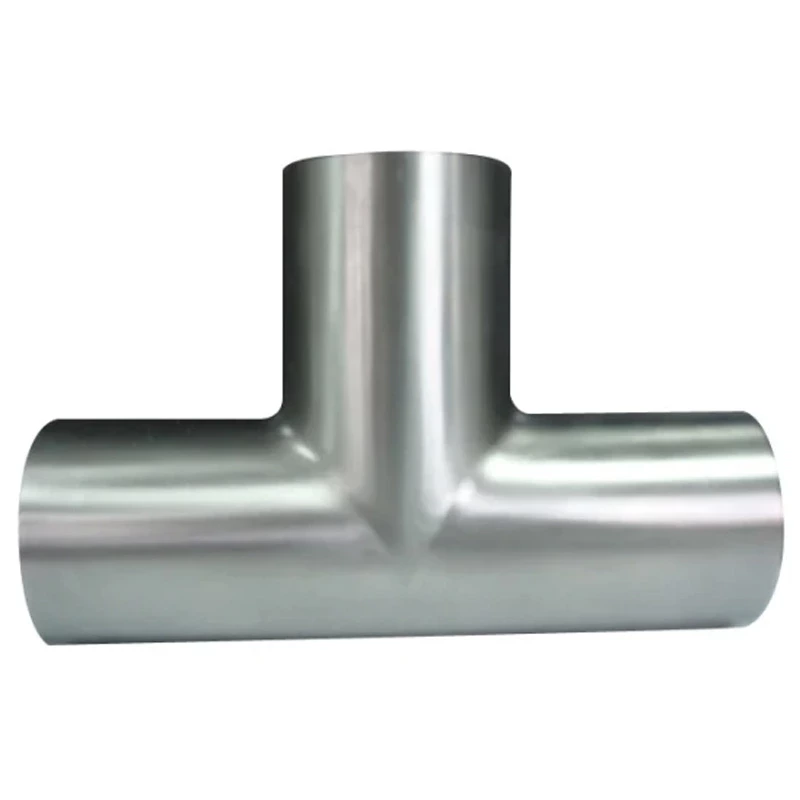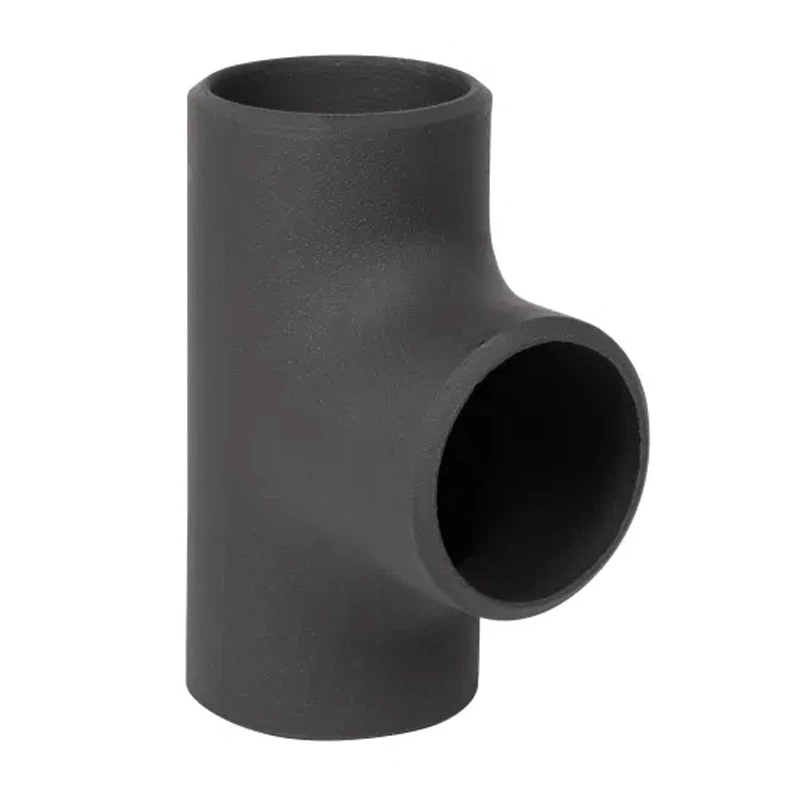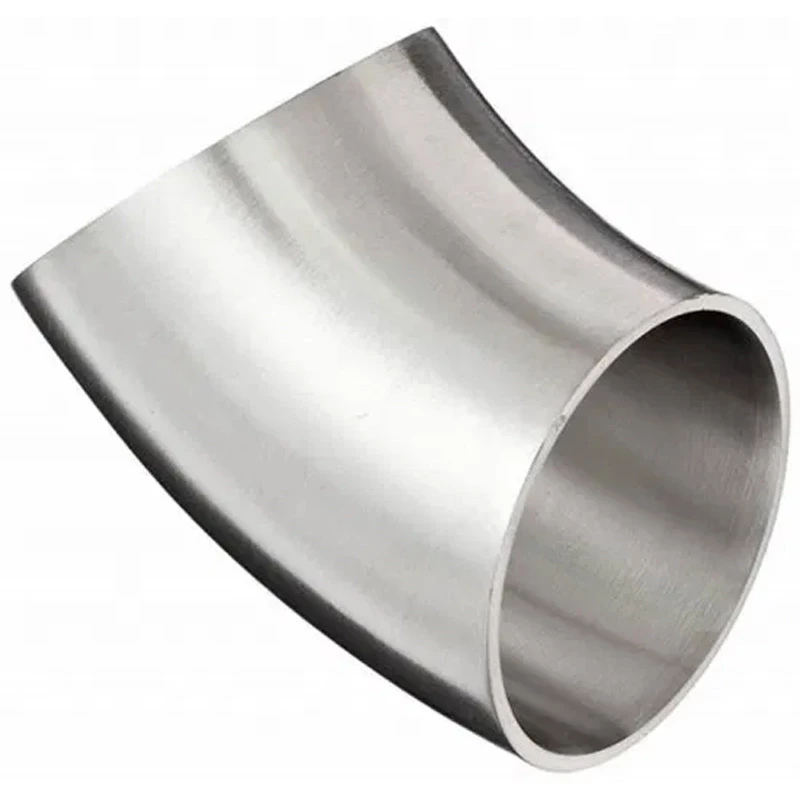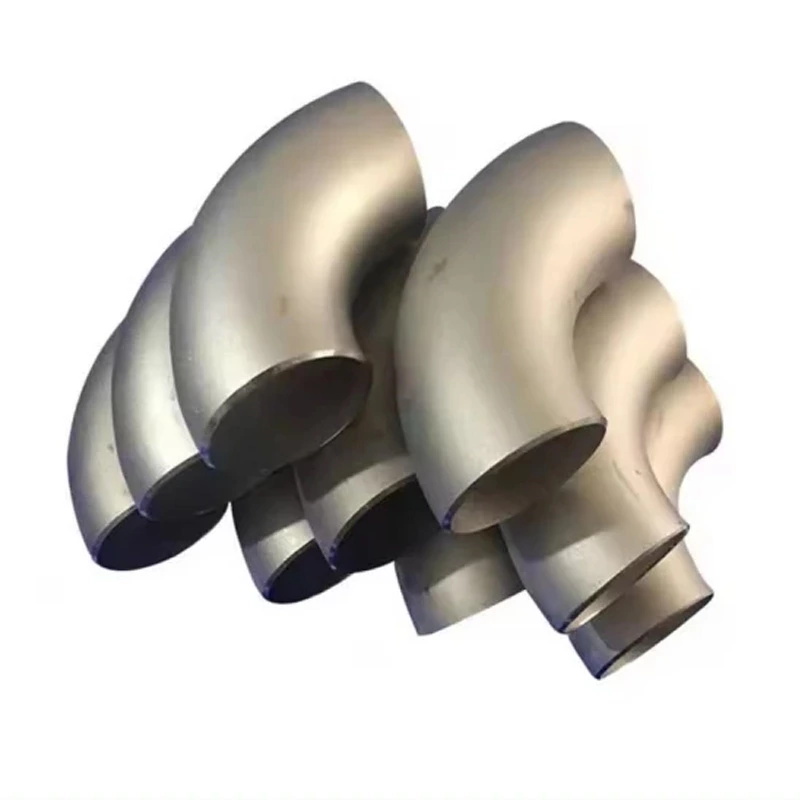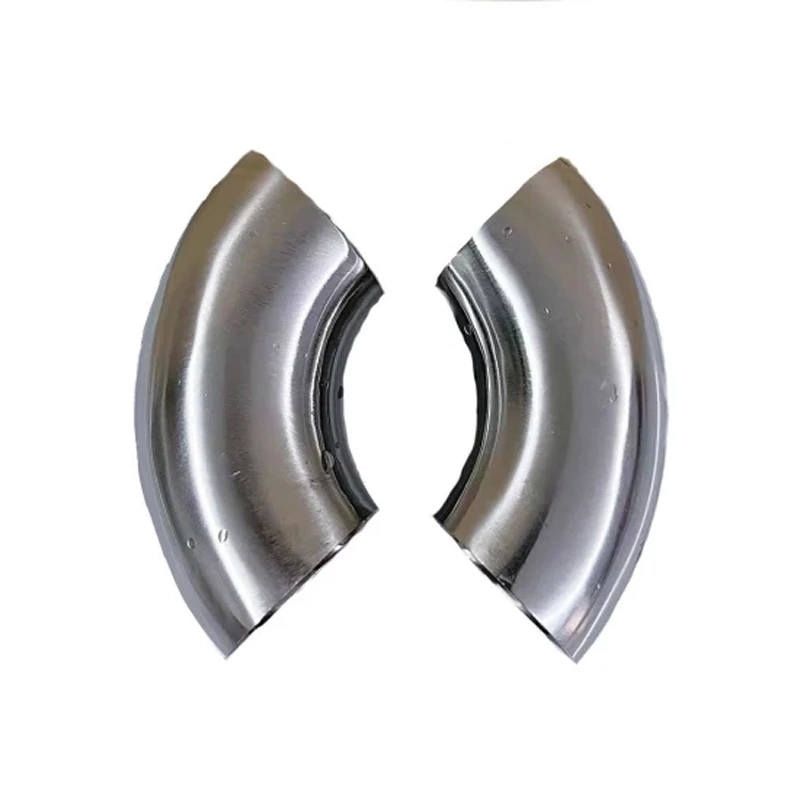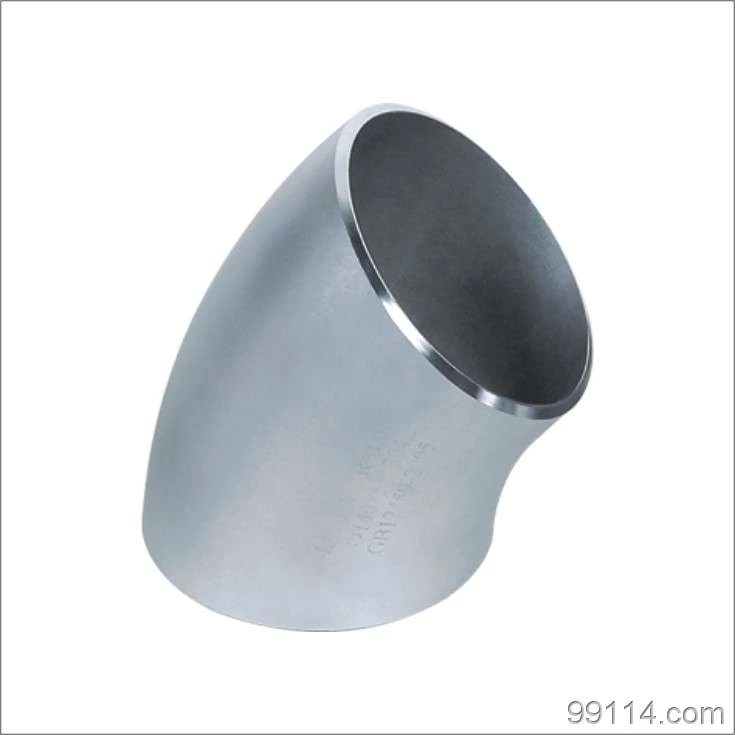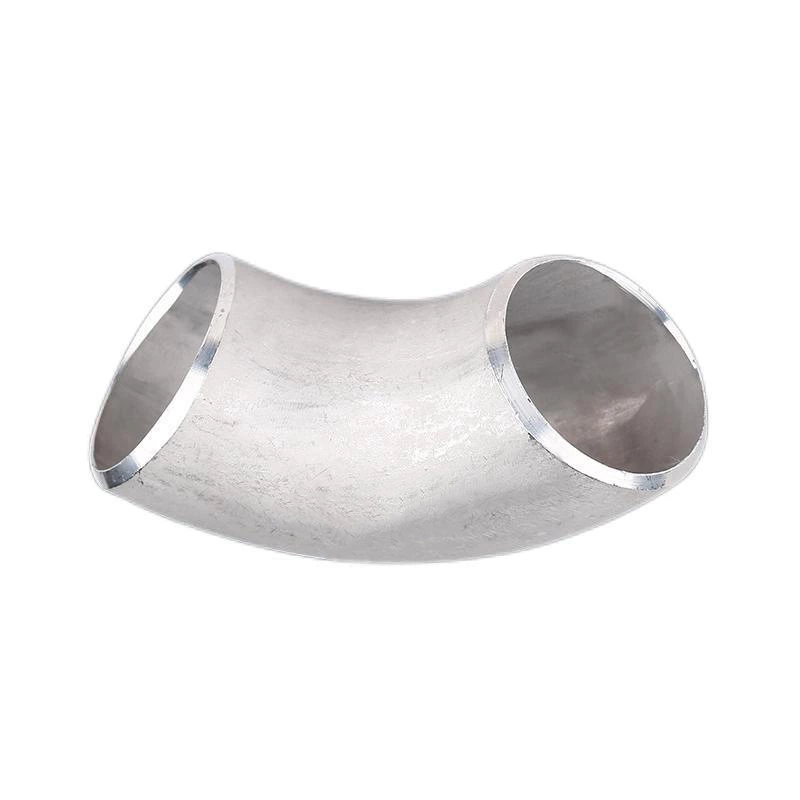Stainless Steel Pipe Blank Stamping Process
Stamping is a forming process that was earlier used in mass production of pipe fittings. It has been replaced by hot pushing or other forming processes in the production of commonly used specifications of Stainless Steel Weld Elbow, but it is still used in some specifications of elbows due to small production quantities and excessively thick or thin wall thickness. The product has special requirements. The stamping forming of the elbow uses a tube blank with the same outer diameter as the elbow, and uses a press to directly press it in the mold.
Before stamping, the tube blank is placed on the lower die, the inner core and the end die are loaded into the tube blank, and the upper die moves downward to start pressing. The elbow is formed by the constraint of the outer die and the support of the inner die. Compared with the hot pushing process, the appearance quality of stamping is not as good as the former; the outer arc of the stamped elbow is in a stretched state during forming, and there is no excess metal in other parts to compensate, so the wall thickness at the outer arc is thinned by about 10%. However, due to its suitability for single-piece production and low cost, the stamping elbow process is mostly used for the manufacture of small batches and thick-walled elbows.
Below, let's briefly explain the stamping process of stainless steel pipe blanks:
1. During the stamping process of elbow blanks, if the prototype of the "fan-shaped bending edge" phenomenon is found on the inside of the blank (due to the improper position of the blank on the lower tire mold). The stamping operation should be stopped immediately, and the unformed blank should be removed and put back into the furnace to reheat to the required hot working temperature. Then, the position of the blank on the lower tire mold is appropriately adjusted, and then the secondary stamping is performed. Under normal circumstances, the secondary stamping quality of the blank after reheating and adjusting the position is relatively ideal.
2. For the same specification elbows produced in batches or quantities for the first time. After making the elbow blank expansion template (expansion diagram), generally one or two blanks are placed first. According to the status of the finished product after heating and stamping: if there is a deviation, the outer dimensions of the expansion template are corrected in time, and this is used as the basis for cutting; if it meets the requirements, the batch or quantity of elbows are manufactured accordingly.
3. If for some reason, after the blank is moved to the lower mold for alignment after being taken out of the furnace, its temperature is lower than the specified hot working temperature (detected by an optical thermometer or other temperature measuring instrument). Generally, do not force stamping, but return to Shanghai to reheat to the specified hot working temperature before stamping. Otherwise, on the one hand, it may produce scrap; on the other hand, it may cause destructive damage to the lower mold. Especially for. From the production rate and automation level of elbow butt welding, the use of carbon dioxide gas protection automatic welding; or the use of submerged arc automatic welding with back padding, etc., is an important aspect of elbow manufacturing technology that needs to be improved.
The varieties of stamped elbows include 45° elbows, 90° elbows, tees, crosses, 45° oblique tees, double socket pipe clamps, single socket pipe clamps, pipe caps, flexible joints, branch pipe seats, etc. Among them, tees and crosses are divided into equal diameter and different diameters; double socket pipe clamps are also divided into equal diameter and different diameters, and different diameter double socket pipe clamps are divided into concentric and eccentric.
There are several points about the production of stamped elbows:
1. Stamped elbow variable diameter pipe fittings refer to the reduction of the diameter of the pipe end or a part of the pipe; pipe fittings with curling and bottom sealing, increase the total strength of the pipe end by curling to the outside or inside of the pipe or sealing the end of the pipe fitting;
2. Stamped elbow variable wall thickness pipe fittings refer to the change of wall thickness along the length of the pipe;
3. Pipe fittings with changed cross-section, according to requirements, change the circular cross-section into square, elliptical, polygonal, etc.;
4. Pipe fittings with flanges and round edges, the former refers to the convexity of the pipe end to the inside or outside, and the latter refers to the pipe fittings with bulges or grooves formed in the circumferential direction of the pipe;
5. Stamped elbow bending pipe fittings, what we are more exposed to is to change straight pipes into curved pipes with different curvature radii, such as elbows, elbows, etc.
